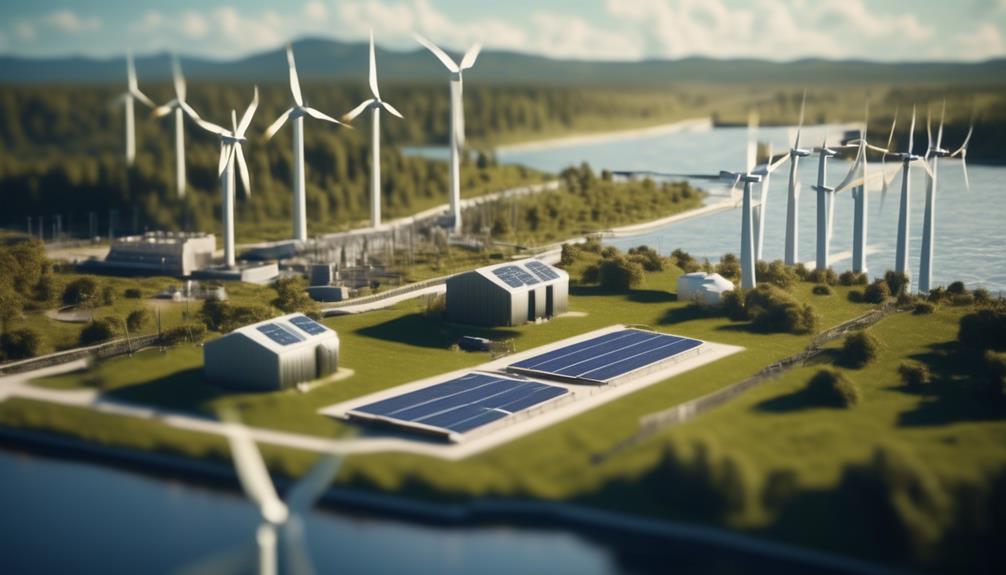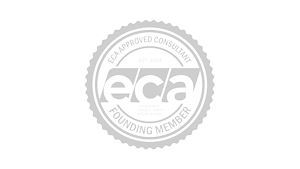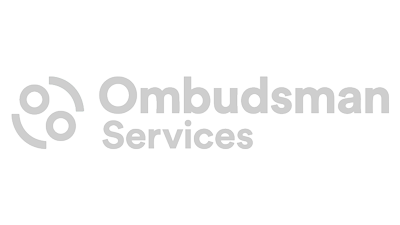In the ever-evolving landscape of energy procurement, businesses are constantly on the lookout for strategies that not only reduce costs but also align with their sustainability goals. The quest for the right mix of efficiency, cost savings, and green initiatives can seem like navigating a labyrinth, fraught with the risks of market volatility and the challenge of staying abreast of regulatory changes. This landscape demands not just any approach, but one meticulously tailored to the unique contours of each business’s needs and aspirations.
With a deep understanding of these challenges, our focus is on demystifying the complexities of energy procurement. By delving into a spectrum of strategies from audits and analysis to the diversification of suppliers, we aim to equip you with the knowledge to make empowered decisions. This exploration is designed to not only illuminate the path to optimised energy usage and cost but also to ensure you are well-informed about the latest trends and opportunities in the energy market.
As we venture into these strategies, rest assured that the insights awaiting you are poised to transform your approach to energy procurement, encouraging a journey towards more sustainable and economically sound energy management practices.
Key Takeaways
- Energy audit and analysis can help businesses identify areas of inefficiency and potential cost savings, leading to reduced energy usage and environmental benefits.
- Energy demand management techniques such as load shifting and demand response can optimise energy usage to match demand, resulting in lower energy costs, increased reliability, and reduced environmental impact.
- Integrating renewable energy sources into the energy infrastructure can lower carbon footprint, contribute to sustainability goals, and provide long-term cost savings. Renewable energy incentives and financing options should be considered.
- Maximising renewable energy in energy portfolios can reduce reliance on fossil fuels, support environmental sustainability, and lead to long-term cost savings. Exploring incentives, energy storage solutions, and renewable energy certificates can further enhance the benefits.
Energy Audit and Analysis
An energy audit and analysis is a rigorous examination of a business’s energy usage patterns and costs, aimed at identifying areas of inefficiency and opportunities for energy savings. By evaluating equipment, systems, and operational practices, businesses can optimise their energy performance and reduce their overall energy consumption. This proactive approach allows companies to identify potential energy efficiency strategies that can lead to significant cost savings and environmental benefits.
During an energy audit and analysis, experts analyse a business’s energy consumption patterns to identify any areas of waste or inefficiency. This includes examining energy usage data, conducting on-site inspections, and interviewing key personnel. The goal is to gain a comprehensive understanding of how energy is being used and where improvements can be made.
Energy Demand Management
Energy Demand Management involves optimising energy usage to match demand, minimising peak demand, and reducing unnecessary consumption through strategic measures such as load shifting, demand response, and energy efficiency initiatives. It is a crucial element in achieving energy conservation strategies and implementing demand side management techniques.
By effectively managing energy demand, businesses can lower energy costs, increase energy reliability, and reduce their environmental impact.
To implement Energy Demand Management, businesses can leverage smart building technologies, energy-efficient equipment, and behaviour modification programs. Smart building technologies enable real-time monitoring and control of energy usage, allowing businesses to identify areas of high energy consumption and implement measures to reduce it. Energy-efficient equipment, such as LED lighting and energy-efficient HVAC systems, can significantly reduce energy demand. Additionally, behaviour modification programs can educate employees on energy-saving practices and encourage them to adopt energy-conscious behaviours.
The benefits of effective Energy Demand Management are significant. Businesses can experience lower energy bills due to reduced consumption during peak periods, which often come with higher energy prices. By managing energy demand, businesses also alleviate strain on the grid, leading to improved grid reliability. Moreover, implementing energy conservation strategies and demand side management techniques contribute to a more sustainable energy footprint, aligning with the growing importance of corporate environmental responsibility.
Renewable Energy Integration
Renewable energy integration is a crucial aspect of an effective energy procurement strategy for businesses. By exploring cost-effective renewable options, businesses can transition to clean energy sources and reduce their reliance on fossil fuels.
Maximising the use of renewable energy not only helps businesses lower their carbon footprint, but it also offers long-term cost savings and enhances their overall sustainability efforts.
Cost-Effective Renewable Options
By incorporating cost-effective renewable options, businesses can optimise their energy procurement strategies and achieve long-term savings while contributing to their sustainability goals. Here are some key factors to consider when exploring cost-effective renewable options:
- Renewable energy incentives: Many governments and utility companies offer incentives such as tax credits, grants, and rebates to encourage businesses to adopt renewable energy sources. These incentives can significantly reduce the upfront costs associated with renewable energy integration.
- Innovative financing options: Businesses can explore innovative financing options such as power purchase agreements (PPAs) or energy service agreements (ESAs) to fund renewable energy projects. These financing options allow businesses to install renewable energy systems without the need for large upfront capital investments.
- Energy storage solutions: Integrating energy storage systems with renewable energy sources can help businesses maximise their energy usage and reduce dependency on the grid during peak demand periods. This can further enhance cost-effectiveness and reliability.
- Energy management software: Utilising advanced energy management software can help businesses optimise their energy consumption and identify opportunities for further cost savings. These software solutions provide real-time data analytics and insights, enabling businesses to make data-driven decisions for their renewable energy procurement strategies.
Transitioning to Clean Energy
With a focus on optimising energy procurement strategies and achieving long-term cost savings, businesses can now explore the integration of clean energy sources into their energy supply. Transitioning to clean energy involves incorporating renewable energy sources such as solar panels, wind turbines, and bioenergy into a business’s energy infrastructure.
This shift not only helps businesses reduce their carbon footprint and contribute to sustainability goals but also provides an opportunity to take advantage of clean energy incentives and renewable energy financing. By working with renewable energy suppliers and understanding the regulatory landscape, businesses can successfully navigate the transition to clean energy.
Additionally, transitioning to clean energy can lead to significant long-term cost savings and reduce dependence on traditional fossil fuels. By embracing clean energy integration, businesses can showcase their commitment to innovation and environmental stewardship.
Maximising Renewable Energy
To achieve optimal energy procurement strategies and maximise cost savings, businesses must prioritise the integration of renewable energy sources into their energy portfolios. Maximising renewable energy offers numerous benefits, including reduced reliance on fossil fuels, cost savings, and support for environmental sustainability goals.
Here are four key considerations for businesses looking to maximise renewable energy:
- Renewable energy incentives: Explore government incentives, such as tax credits and grants, that can help offset the upfront costs of implementing renewable energy solutions.
- Energy storage solutions: Invest in energy storage technologies, such as batteries or pumped hydro storage, to store excess renewable energy for later use, ensuring a reliable and consistent energy supply.
- Renewable energy certificates (RECs): Offset traditional energy usage by purchasing RECs, which represent the environmental attributes of renewable energy generation and can help support renewable projects.
- Compatibility and availability: Assess the availability of renewable energy sources in your region and evaluate their compatibility with your business’s energy needs to determine the most suitable options for integration.
Negotiating Energy Contracts
What strategies can businesses employ to effectively negotiate energy contracts?
Energy contract negotiation is a critical aspect of energy procurement for businesses. To ensure favourable terms and conditions, businesses should adopt a proactive and analytical approach.
Firstly, businesses should thoroughly analyse their energy needs and consumption patterns. This analysis will enable them to determine the appropriate contract type and duration. Fixed-rate contracts provide stability by locking in a consistent price for the duration of the contract, while variable-rate contracts allow for flexibility by fluctuating with market prices. Blended contracts offer a combination of both fixed and variable rates.
Shopping around and comparing offers from different suppliers is crucial. By obtaining multiple quotes, businesses can negotiate better rates and contract terms. They should carefully review contract terms and conditions, including termination clauses, billing procedures, and penalties.
To effectively negotiate energy contracts, businesses should leverage their purchasing power. Pooling energy demand with other businesses or joining energy cooperatives can lead to greater bargaining power and lower energy costs.
Furthermore, businesses should consider engaging the services of energy consultants or brokers who specialise in energy procurement. These professionals have in-depth knowledge of the energy market and can assist in securing favourable contract terms.
Energy Cost Optimisation
Energy cost optimisation involves strategically selecting the most suitable energy contracts with suppliers and utilities to ensure favourable prices for your business. To achieve energy cost optimisation, consider implementing the following measures:
- Conduct a thorough analysis of your energy consumption: Track and monitor your energy usage patterns to identify areas of high consumption and potential inefficiencies.
- Implement energy efficiency measures: Explore ways to reduce energy consumption by implementing energy-efficient technologies, such as LED lighting, smart thermostats, and energy management systems.
- Shop around and compare options: Take the time to research different energy suppliers and utilities, comparing their contract options, pricing structures, and customer reviews to find the best fit for your business.
- Consider renewable energy procurement: Evaluate the feasibility of incorporating renewable energy sources into your energy mix. Renewable energy can not only help reduce your carbon footprint but also provide long-term cost stability.
Demand Response Programmes
Demand response programmes offer businesses the opportunity to reduce energy usage during peak demand periods while earning financial incentives. These programmes play a crucial role in grid stability and reliability by allowing businesses to adjust their energy consumption in real-time. By participating in demand response programmes, businesses can optimise their energy costs and potentially generate additional revenue.
One key aspect of demand response programmes is the use of automated demand response systems. These systems utilise advanced energy management technologies to monitor energy usage and make real-time adjustments based on predetermined parameters. This automation enables businesses to respond quickly and efficiently to peak demand periods, reducing their energy consumption without compromising their operations.
Participating businesses can benefit from financial incentives offered by utility companies or grid operators. These incentives can take the form of direct payments, reduced energy rates, or credits that can be used to offset future energy costs. By actively managing their energy consumption, businesses not only save money but also contribute to the overall stability of the grid.
Moreover, demand response programmes align with businesses’ sustainability efforts by reducing their environmental impact. By reducing energy consumption during peak periods, businesses can lower their carbon footprint and help mitigate the need for additional power generation.
Energy Risk Management
Effective energy risk management is crucial for businesses to navigate potential challenges and uncertainties associated with energy procurement and usage. With the ever-changing energy landscape, businesses need to be proactive in managing risks to ensure stable and cost-effective energy supply.
To engage the audience, here are four key elements of energy risk management:
- Risk assessment: Conducting a comprehensive assessment of potential risks and vulnerabilities in energy procurement and usage. This includes analysing market conditions, regulatory changes, and supply chain disruptions.
- Hedging strategies: Implementing hedging techniques to mitigate price volatility and protect against unexpected cost increases. This may involve entering into long-term contracts or utilising financial instruments to lock in favourable energy prices.
- Diversification: Diversifying energy suppliers and sources to reduce reliance on a single provider. This helps mitigate the risk of supply disruptions and enables businesses to take advantage of competitive pricing and favourable contract terms.
- Monitoring and optimisation: Continuously monitoring market trends, energy consumption patterns, and technology advancements to make informed decisions. Implementing energy efficiency measures and exploring energy storage solutions can further optimise energy procurement and usage.
Supplier Diversification
To enhance resilience and flexibility in energy procurement, businesses should consider implementing supplier diversification strategies. Supplier diversification involves working with multiple energy suppliers to reduce risk and increase flexibility in energy procurement. By diversifying suppliers, businesses can mitigate the impact of supply disruptions and price fluctuations in the energy market. This strategy enables businesses to access a wider range of energy products and services tailored to their specific needs.
In order to effectively implement supplier diversification, businesses must conduct supplier evaluation and selection. This process involves assessing the capabilities, reliability, and track record of potential suppliers. By thoroughly evaluating suppliers, businesses can ensure that they are working with reputable and trustworthy partners.
To engage the audience and provide a visual representation of supplier diversification, the following table outlines the benefits and considerations of implementing this strategy:
| Benefits | Considerations |
|---|---|
| Risk reduction | Increased administrative complexity |
| Flexibility in procurement | Managing relationships with multiple suppliers |
| Access to a wider range of energy products and services | Potential impact on pricing and contract terms |
| Enhanced negotiation power | Ensuring alignment with business goals |


















